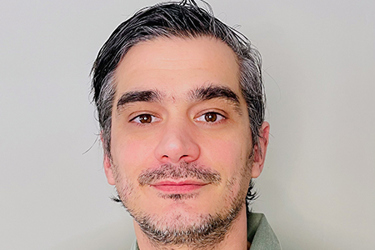Competitors Need To Collaborate On Digital Biomarkers

By Dan Schell, Chief Editor, Clinical Leader

The pharma industry isn’t known for collaboration, but Regeneron is trying to change that — at least as far as digital biomarkers are concerned. Last month, while talking about digital biomarkers with Bari Kowal of Regeneron, she mentioned the company’s Digital Biomarkers Summit slated for May 14, 2024. What struck me as odd was the fact that Regeneron invites other pharma companies to attend and present at this event. So, I followed up with Rinol Alaj, senior director, digital health technologies and event chair for the summit who also runs the company’s Digital Biomarker Lab, to learn more about why Regeneron is producing this event (their second annual).
“Building digital biomarkers is an extremely complex process that takes many years to complete,” says Alaj. “Across the industry, there are many companies working independently on the same challenges and endpoints. So, we thought this event would be a terrific opportunity to bring the industry together and create a mechanism of collaboration to help accelerate overall digital biomarker adoption.”
Specifically, he said they had three primary objectives for creating this summit:
- They wanted to create a precompetitive environment in which all the companies/attendees could work together on this industrywide problem — or really — opportunity. “Digital biomarkers are a mechanism of measuring treatment effect or functional decline. We can compete on a drug, but not on how to measure that mechanism,” says Alaj.
- There's a lot of digital biomarker scientific work happening in academia and at research organizations and smaller vendors. Often, these organizations don’t get the opportunity to present at larger conferences, so the Biomarker Summit offers them that opportunity.
- By sharing their stories of success and failure, they can help everyone better understand the complexity of these biomarkers as well as their potential impact on the industry — and hopefully accelerate adoption.
YOU’LL NEED A NEW WAY OF PROBLEM SOLVING
Regeneron limits the number of attendees for the summit to a little over 200, and when I spoke with Alaj in mid-April, the event was at full capacity. Alaj says the agenda was different than last year’s as are most of the panelists and presenters. For the latter, he was especially excited about the keynote speaker, Vijay Govindarajan, Coxe Distinguished Professor, Tuck School of Business, Dartmouth. Govindarajan is known for his work on strategy and innovation, which Alaj says is an integral part of the industry advancing digital biomarkers and embracing them. “Digital biomarkers are still relatively new and involve new technologies,” Alaj explains. “Researching them requires change management, innovative thinking/frameworks, and new ways of problem solving. The work the industry has done on digital health technologies and biomarkers is well aligned with Vijay’s ‘fusion strategy,’ which is basically a framework for how to solve problems in real time using technology in a collaborative way.”
He says Regeneron wanted this event to be more than just vendors and pharma companies presenting, so they included representatives from academia as well as government and regulatory agencies. For example:
- Bibi Bielekova, chief of the Neuroimmunological Diseases Section at NIH, shared some of her groundbreaking work on digital biomarkers while working with MS patients.
- Matthew Goodman, interdisciplinary professor at Northeastern University, discussed the use of wearable sensors in predicting aggressive behaviors, specifically in patients with autism.
- Adam Vogel, professor of speech of neuroscience department at University of Melbourne, spoke about the work he's done with vocal biomarkers, specifically in Parkinson disease and ALS.
One change at this year’s summit was the addition of a poster session. Alaj says this is significant because it expands the ability of companies to attend and share their progress through an avenue other than a formal presentation. (There were 15 posters at the summit.)
NETWORKING IS KEY FOR DIGITAL BIOMARKERS
Aside from these types of summits and conferences, Alaj says more digital biomarker work is being done at industry non-profit organizations such as TransCelerate and DiMe (Digital Medicine Society). For example, the goal of TransCelerate’s Patient Technology Initiative was to “enable and accelerate the adoption of patient-facing digital technologies in clinical trials.” DiMe has addressed digital biomarkers in multiple events and documents, including this virtual journal titled, “Quantifying the Benefits of Digital Biomarkers and Technology-Based Study Endpoints in Clinical Trials: Project Moneyball.”
Alaj stresses the importance of networking with these types of organizations — and at events like Regeneron’s summit. “I met a lot of people at last year’s summit that I didn't know. Since then, we’ve had conversations where we share some information about the different devices and areas in which we’re working. We brainstorm. So, networking is one of the key objectives of the summit. After all, we are all focused on the goal of raising the awareness of the value digital biomarkers can bring to clinical trials.”
